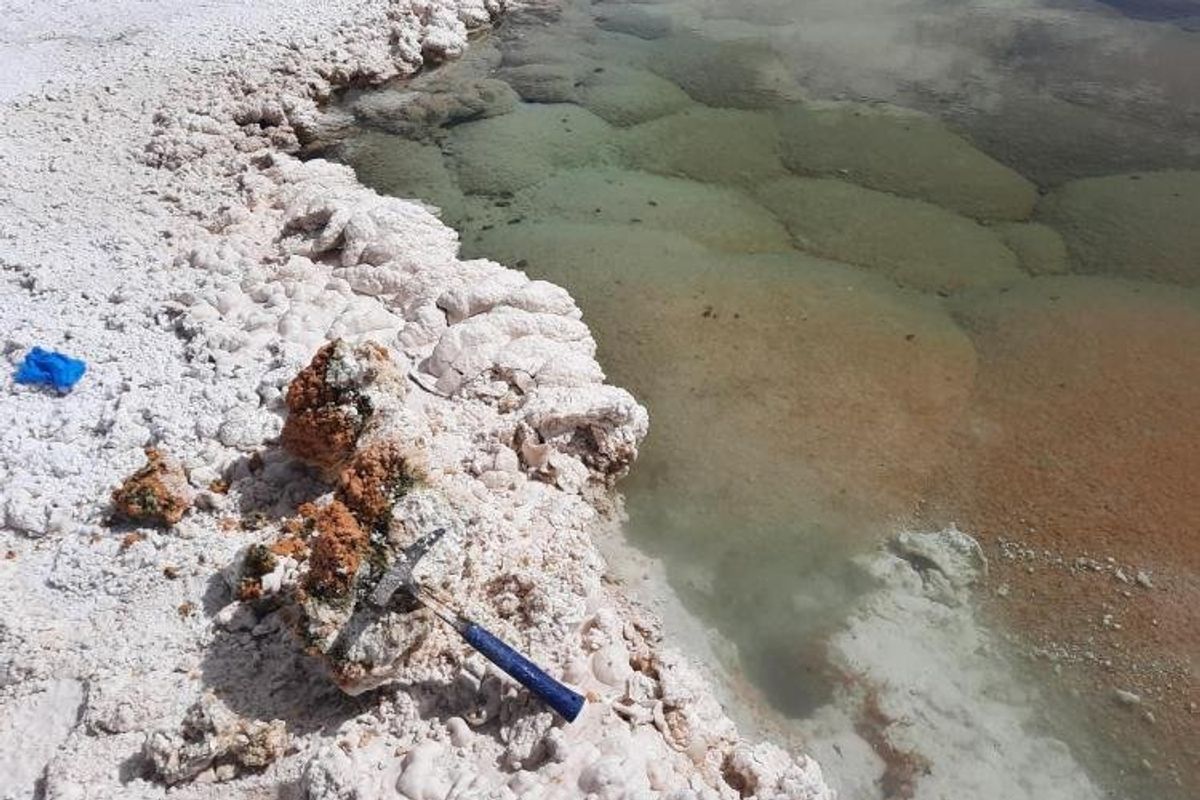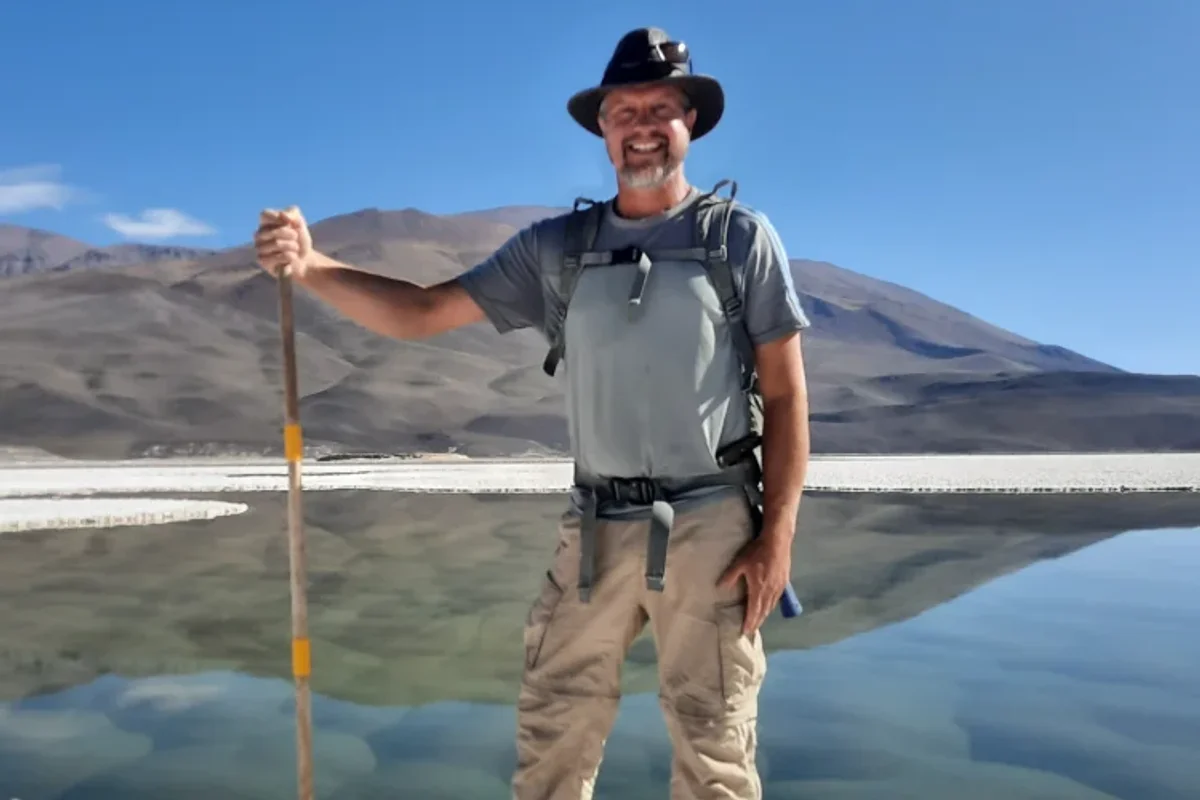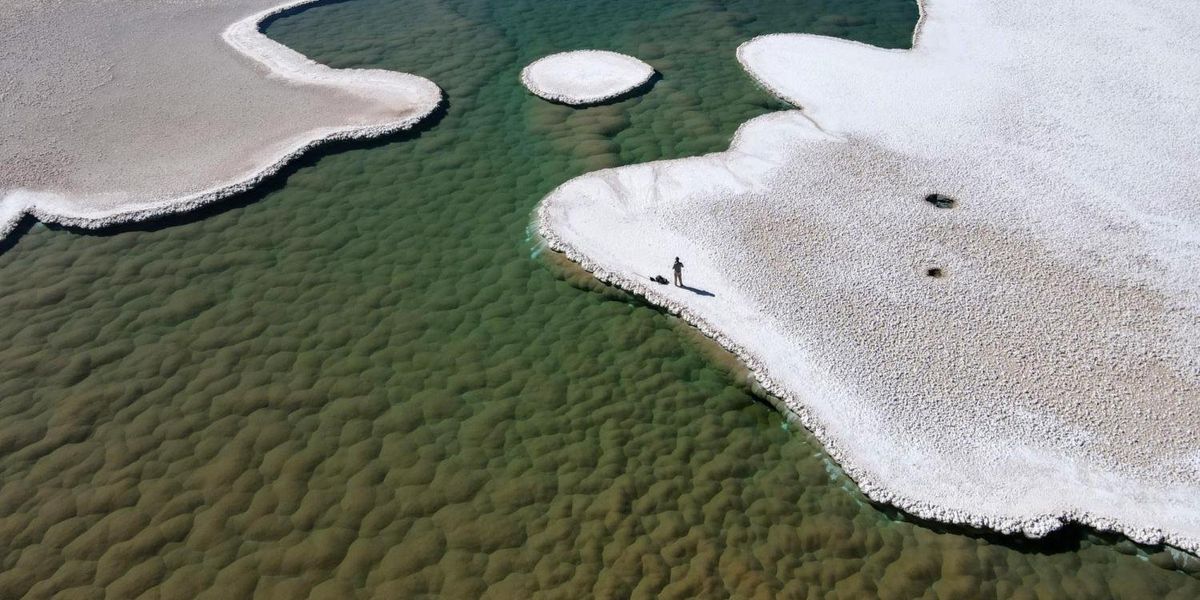An “alien” ecosystem has just been discovered in a remote part of the Atacama desert which is “unlike anything” ever seen before, a team of scientists has revealed.
The incredible patchwork of crystal-clear lagoons surrounded by vast salt plains was located in Argentina’s Puna de Atacama – a giant plateau more than 12,000 feet above sea level.
One of the driest environments on Earth, rain rarely – if ever – falls here and sunlight relentlessly pummels the terrain, creating an environment that few animals or plants can survive.
And yet, in April last year, geologist Brian Hynek, of the University of Colorado Boulder (CU), was looking through some satellite images of the region when he stumbled upon what looked like a network of lagoons.
Intrigued, he and microbiologist Maria Farías drove as far as they could towards the mysterious formations, then hiked several miles in the blazing sun, according to a news release published by CU.
“In some places, we were sinking up to our knees in salt slush,” Hynek said.
But as soon as they arrived at the site, they knew it had been worth the effort: they had hit on something truly remarkable.
Green stromatolite mounds flourish at the bottom of one of the Atacama lagoons (Brian Hynek)
There, they found the network of 12 lagoons, stretching some 25 acres (10.1 hectares) and surrounded by barren mountains in the distance.
Beneath its sparkling waters, Hynek spotted huge mounds of green growth, some 15 feet (4.5 metres) wide and several feet high.
He identified them as stromatolites – complex microbial communities that form massive rock mounds as they grow, much like corals building reefs.
However, these were unlike any either of the scientists had ever seen before.
These communities may resemble stromatolites that existed during a period in Earth’s history called the early Archaean, when oxygen was almost nonexistent in the atmosphere, preliminary observations suggest.
“This lagoon could be one of the best modern examples of the earliest signs of life on Earth,” Hynek said.
“It’s unlike anything I’ve ever seen or, really, like anything any scientist has ever seen.”
Whilst stromatolites do exist on Earth today, including off the coast of the Bahamas, these modern microbial clusters tend to be relatively small. They also grow passively by trapping grains of sand and other debris floating in the sea, CU notes in its press release.
In contrast, Ancient stromatolites could stretch to 20 feet tall, and actively sucked in calcium and carbon dioxide from the surrounding water, causing minerals to precipitate around them.
 Hynek used a rock hammer to crack open a stromatolite formation and reveal its pink centre(Brian Hynek)
Hynek used a rock hammer to crack open a stromatolite formation and reveal its pink centre(Brian Hynek)
The mounds found in the Atacama lagoons more closely resembled those Archaean communities than anything else alive on Earth today.
Their rocky layers mainly consisted of gypsum, a mineral commonly seen in stromatolite fossils but absent in almost all modern stromatolites.
Biologically, they comprised an outer layer of photosynthetic microbes called cyanobacteria and a pinkish core rich in archaea —single-celled organisms that are often found in the world’s most extreme environments.
Hynek also pointed out that the lagoon environment could resemble the conditions on ancient Earth, with its salty, acidic waters and exposure to severe solar radiation (owing to its high elevation).
Furthermore, the stromatolite communities could also offer experts unprecedented insight into how life may have arisen on Mars, which resembled our own planet billions of years ago.
“If life ever evolved on Mars to the level of fossils, it would have been like this,” the geologist and space physicist said.
“Understanding these modern communities on Earth could inform us about what we should look for as we search for similar features in the Martian rocks.”
 Hynek (pictured) described the discovery of the lagoons as ‘the biggest eureka moment’ of his life(Bryan Hynek)
Hynek (pictured) described the discovery of the lagoons as ‘the biggest eureka moment’ of his life(Bryan Hynek)
Hynek and Farías are hoping to conduct further experiments to confirm that these previously unknown stromatolites are actively building their rocky formations, and to figure out how the microbes are able to survive such harsh conditions.
However, they may be running out of time.
A company based outside of Argentina has already earmarked the area for lithium mining.
Once this process starts, the Atacama lagoons could be all but ruined.
“This entire, unique ecosystem could be gone in a matter of years,” Hynek said. “We’re hoping that we can protect some of these sites, or at least detail what’s there before it’s gone or disturbed forever.”
He described finding the alien environment as “the biggest eureka moment I’ve ever had in my life.”
“It’s just amazing that you can still find undocumented things like that on our planet,” he said.
Sign up for our free Indy100 weekly newsletter
Have your say in our news democracy. Click the upvote icon at the top of the page to help raise this article through the indy100 rankings

Dr. Thomas Hughes is a UK-based scientist and science communicator who makes complex topics accessible to readers. His articles explore breakthroughs in various scientific disciplines, from space exploration to cutting-edge research.








